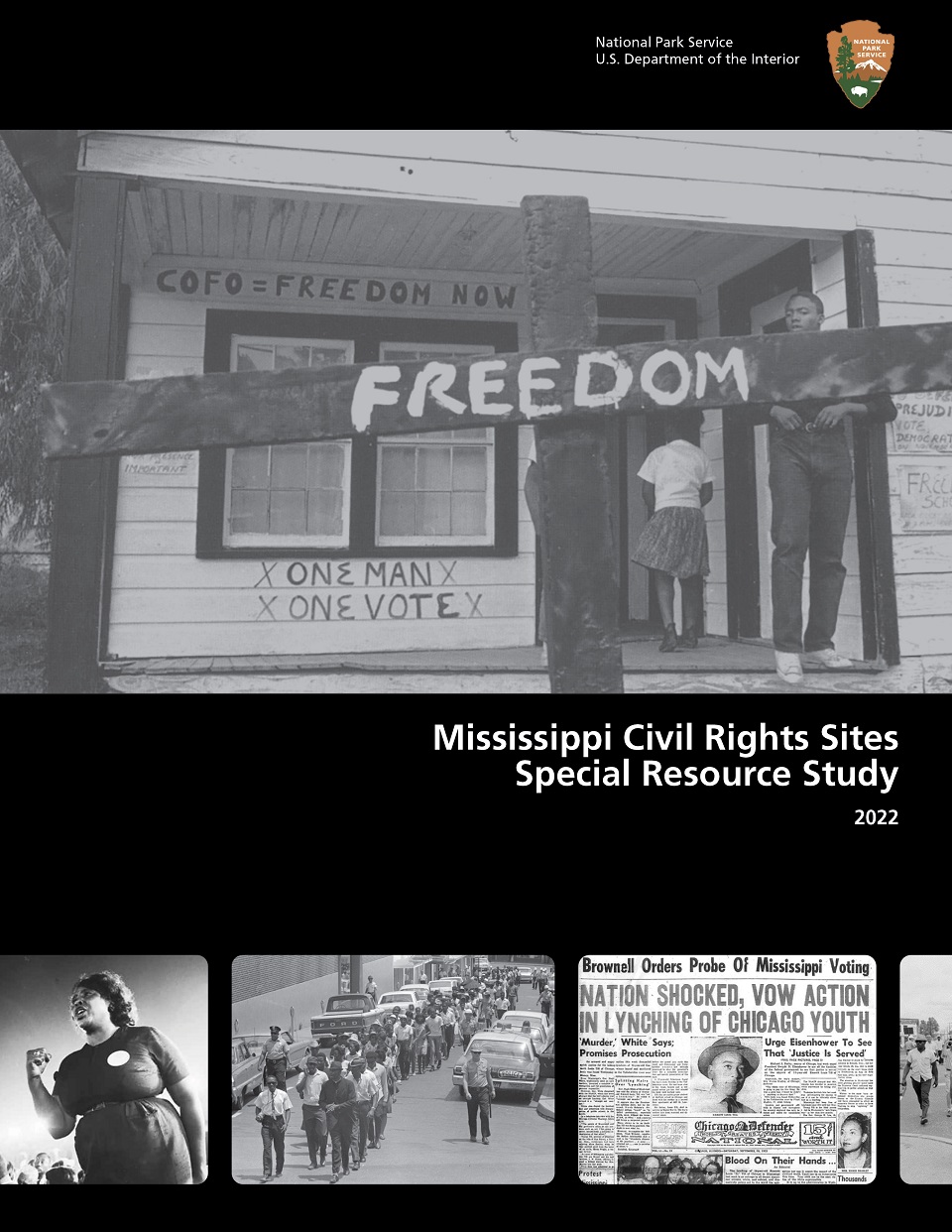News Release
You are viewing ARCHIVED content published online before January 20, 2025.
Please note that this content is NOT UPDATED, and links may not work. For current information,
visit https://www.nps.gov/aboutus/news/index.htm.

NPS Photo
News Release Date: December 21, 2022
WASHINGTON — The National Park Service (NPS) today delivered the Mississippi Civil Rights Sites Special Resource Study to Congress. The study considers a variety of opportunities for the preservation, protection and interpretation of civil rights sites in Mississippi, including technical assistance, funding opportunities and other designation and recognition programs managed by the NPS. The study identified nine sites in Mississippi associated with the 1955 murder of Emmett Till and 1964 Mississippi Freedom project as meeting criteria specifically established by Congress for potential inclusion in the National Park System.Historians generally regard the 1955 lynching of 14-year-old Emmett Till, his funeral in Chicago and the exoneration of his killers among the defining moments of the modern civil rights movement in America. The 1964 Freedom Project sought to register African American voters, create Freedom Schools and seat Freedom Party delegates at the Democratic National Convention. That year was also marked by the murders of Mississippi Freedom Summer volunteers James Chaney, Andrew Goodman and Michael Schwerner. During the decade between these horrific murders, the campaign for civil rights in deeply segregated Mississippi was shaped by people who risked their lives and faced adversity seeking to realize the promise of American democracy. The home of civil rights activists Medgar and Myrlie Evers, previously analyzed as part of the special resource study, became part of the National Park System in 2020.
“The state of Mississippi was a center of gravity in the struggle for civil rights in America. The sites evaluated in this study represent the range of courage and resistance in the face of injustice that characterized this pivotal era in our nation’s history,” said NPS Director Chuck Sams. “Events that unfolded in Mississippi during this period spurred civil rights action across the country. Preserving and commemorating Mississippi civil rights sites would help ensure that these important aspects of America’s heritage, and the grave injustices that sparked them, will never be forgotten.”
The nine sites identified in the study as meeting Special Resource Study criteria for potential inclusion in the National Park System are: the Bryant’s Grocery Store and Ben Roy’s Service Station site in Money, the Burned Station Wagon site in rural Neshoba County, the East Money Church of God in Christ cemetery in Money, the Glendora Cotton Gin and community center in Glendora, the Graball Landing river site in Glendora, the M.W. Stringer Grand Lodge in Jackson, the Mt. Zion Methodist Church in Neshoba County, the Neshoba County Courthouse Square in Philadelphia, and the Tallahatchie County Courthouse and Emmett Till Interpretive Center in Sumner.
Over four years, the NPS team evaluated more than 220 sites across the state and consulted subject-matter experts to inform the study process, including a group of civil rights and Mississippi-based historians, professors, museum directors and activists. The public helped inform the study process through active engagement in numerous public forums and meetings the study team hosted with stakeholders, agencies, landowners, and communities. Engagement with the Mississippi scholars was particularly helpful in identifying sites with the potential to meet special resource study criteria established by Congress.
Congress passed Public Law 115-31 in 2017 directing the special resource study of civil rights sites in Mississippi for their potential to become part of the National Park System. A potential site is evaluated according to four congressionally established criteria: (1) national significance, (2) suitability, (3) feasibility and (4) the need for NPS management. All four criteria must have positive findings for the special resources study to identify a site as eligible for potential inclusion in the National Park System. Ultimately, units in the National Park System are designated by acts of Congress and/or through presidential proclamation. A special resource study serves as one of many reference sources for those interested in the potential designation of an area in the National Park System. Because the study is not a decision-making document, it does not identify a preferred NPS course of action.
About the National Park Service. More than 20,000 National Park Service employees care for America's 423 national parks and work with communities across the nation to help preserve local history and create close-to-home recreational opportunities. Learn more at www.nps.gov, and on Facebook, Instagram, Twitter, and YouTube.
Last updated: December 21, 2022
